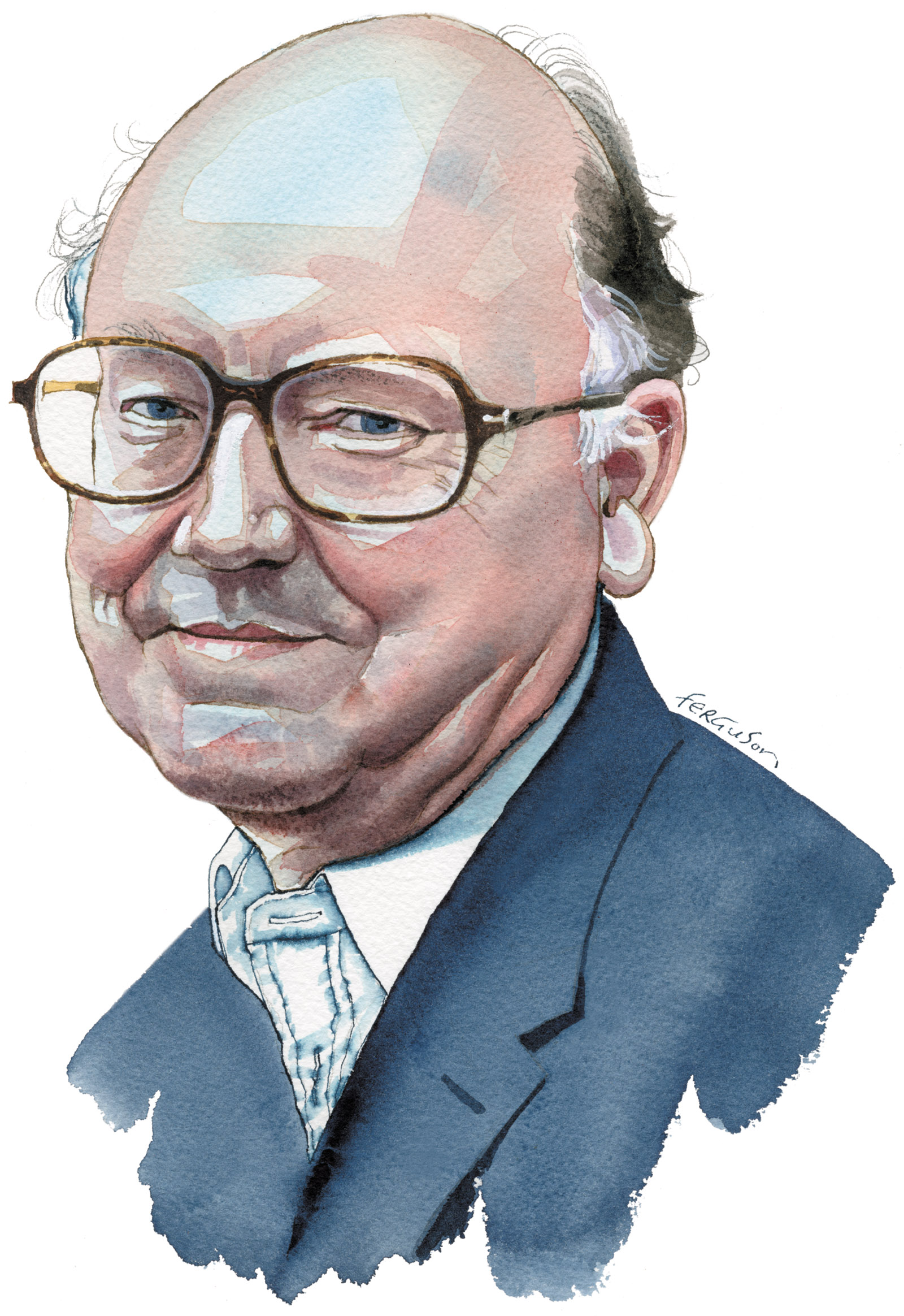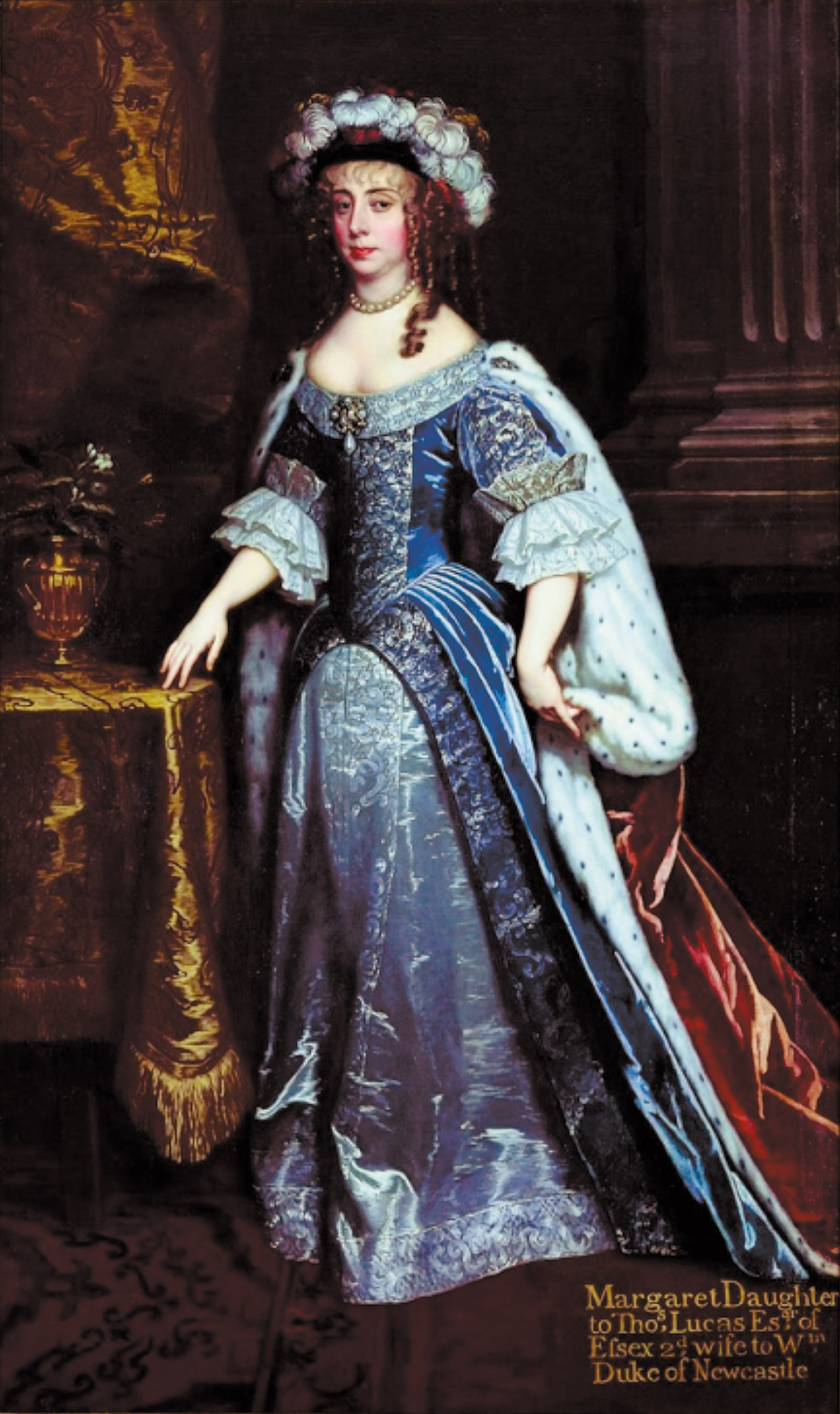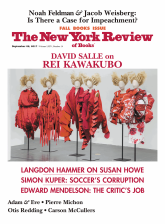By a broken bridge across the River Allier in the French city of Langogne, the eighteen-year-old biographer-in-training Richard Holmes almost sat down and wept. It was 1964, and he was following faithfully in the footsteps of Robert Louis Stevenson, who had traveled with a donkey through the Cévennes in 1878. Like Stevenson, Holmes carried a copy of Napoléon Peyrat’s Histoire des pasteurs du Désert (1842) and wore a large gypsy ring on his wedding finger, though neither man was married at the time of his journey. Holmes did not acquire a donkey in homage to Stevenson’s poor Modestine, who had to be beaten and cajoled into the twelve-day pilgrimage; instead his companion was Le Brun, a battered brown felt hat with the power of making people laugh.
In Langogne, Holmes was overtaken by the feeling that Stevenson was waiting for him. He went back to the bridge by which he had crossed the Allier and took off his hat “rather formally as if to meet a friend.” But then he noticed another old and crumbled bridge, fifty yards downstream, and realized that his bridge and the one Stevenson had traversed were different. “There was no way of following him, no way of meeting him. His bridge was down. It was beyond my reach over time, and this was the true sad sign.”
When he published Footsteps: Adventures of a Romantic Biographer (1985), Holmes—who has written major studies of Shelley, Coleridge, and the friendship between Samuel Johnson and Richard Savage, among others—framed the episode of the broken bridge as his first inkling into the biographer’s vocation:
You could not play-act into the past, you could not turn it into a game of make-believe. There had to be another way. Somehow you had to produce the living effect, while remaining true to the dead fact. The adult distance—the critical distance, the historical distance—had to be maintained. You stood at the end of the broken bridge and looked across carefully, objectively, into the unattainable past on the other side. You brought it alive, brought it back, by other sorts of skills and crafts and sensible magic.
In his new book, This Long Pursuit: Reflections of a Romantic Biographer, Holmes describes himself at age sixty-nine sitting by the streamlet La Troubadore that runs into the River Droude, a minor tributary of the Gardon, which eventually passes under the Pont du Gard near Avignon. At his tin table, surrounded by the cicadas beating “their jazzy Django Reinhardt sound,” he is “flooded with memories of the Cévennes of fifty summers ago.” He falls asleep briefly while making notes, wakes to wonder if the river always dried up in summer, and discovers the answer in his battered copy of Napoléon Peyrat’s book: the Gardon has always fluctuated violently “and sometimes even become the River Lethe too.”
The river flowing down to the great Roman aqueduct and bridge, with its fifty-three stone arches balanced on top of one another “like some brilliant troupe of performing circus elephants, those creatures that never forget,” becomes a metaphor for memory. Holmes notes that Coleridge, in his Biographia Literaria (1817), compared the philosopher David Hartley’s theory of memory to “a broad stream, winding through a mountainous country with an indefinite number of currents, varying and running into each other according as the gusts chance to blow from the opening of the mountains.” Biographers on the riverbank, with their notebooks and attentiveness, are there to record what they can of the memories of lives flowing by.
In between Footsteps and This Long Pursuit, Holmes published Sidetracks: Explorations of a Romantic Biographer (2000). The progression—from adventures to explorations to reflections—maps Holmes’s writing life. One way to understand This Long Pursuit is as the third volume of a biographer’s autobiography. None of his subjects has aged quite as much as Holmes has in the process of writing these books, since he is living and they are dead. Characterizing the biographer as a waiter “who attends upon his subjects, who is at their service for a long period of faithful employment,” Holmes reflects in This Long Pursuit on having spent nearly fifteen years with Samuel Taylor Coleridge: “It ended in nine hundred pages over two volumes. We both aged considerably in the process.”
The critic Miranda Seymour described the second volume, Coleridge: Darker Reflections (1998), as “a biography to grow old with.” Ostensibly it is Coleridge who ages, while Holmes, discreet and self-contained, observes unobtrusively. His biography is authoritative because, alongside the fastidious account of Coleridge’s public life and times, Holmes offers a vie privée, as only the most intimate of servants could. We seem to see into Coleridge’s soul as it darkens toward death. But actually the biographer changes too, no less dramatically, across the span of his own lifetime. Taken together, Holmes’s trilogy about his vocation is a series of self-portraits, capturing the sensibility that has evolved over time to produce such fine books about other Romantics.
Advertisement
Among the many Romantics Holmes has written about, it is Mary Wollstonecraft, author of A Vindication of the Rights of Men (1790) and A Vindication of the Rights of Woman (1792), who has been his near-constant companion for half a century. It is in her that he locates the origins of the Romantic sensibility, the experiment in living and writing that was, and is, a break for freedom from social customs that constrain the human spirit.
In Footsteps he explains how he came across a letter she wrote to the liberal attorney William Roscoe, announcing her determination to travel to revolutionary Paris in 1792 and risk “neck or nothing.” Preoccupied with revolutionary sentiments of his own, Holmes set off to see the Parisian uprisings of 1968 for himself with Wollstonecraft as his guide. His interest in her predates Claire Tomalin’s pioneering biography of 1974 and others that followed it. Retrospectively, he characterizes the attraction in these words: “There was something, I suppose, like a wild waterfall in the headlong, broken, plunging quality of Mary’s life. I stood and gazed at it roaring through the streets of Paris, visible only to me.”
Following Wollstonecraft into the heart of revolutionary terror, Holmes was surprised to find the entire outcome of the Revolution reduced, from her point of view, to the success or failure of a single relationship in one little room: “I came to feel that her deepest understanding of what the Revolution meant was produced by the emotional changes in the ‘little kingdom’ of her own heart.” Wollstonecraft, still unmarried in her early thirties, fell in love with an American businessman, Gilbert Imlay, who introduced her to sexual pleasure, fathered her first child, and saved her from the guillotine. Eventually he disappeared with an actress, leaving Wollstonecraft a suicidal single parent, but nevertheless, when she came to write a stage play about her experiences in Paris, it was a comedy.
“The accusers of Imlay should think hard about that,” Holmes remarks. In 1985 he had not reached a conclusion about Wollstonecraft’s experiences in the Revolution. On the one hand, they were a personal tragedy, on the other a triumph. “Most important of all, she directed me away from any cynical or over-hasty reaction to 1968 and made me realize that conclusions lie in the long term, in the next generation, in the ‘seeds of time.’”
In Sidetracks Holmes picks up Wollstonecraft’s story after Imlay abandoned her. He presents her next relationship, with the philosopher and novelist William Godwin, from a number of different angles. He conducts himself as a literary detective, not tracing the physical footsteps of his subjects, but sleuthing through their remarkable books: Wollstonecraft’s Letters Written During a Short Residence in Sweden, Norway, and Denmark (1796) and Godwin’s Memoirs of the Author of a Vindication of the Rights of Woman (1798), composed in the aftermath of Wollstonecraft’s death following the birth of her second child, Godwin’s daughter, the future Mary Shelley. Once again, Holmes finds a revolution deeper than politics, this time in “the chilly philosopher of absolute reason,” who had fallen deeply in love. England’s two most vocal antimatrimonialists were married at Old St. Pancras Church on March 29, 1797, but continued to work and often dine independently.
This time it was the accusers of Godwin that Holmes confronted. When he received his copy of Godwin’s memoirs of Wollstonecraft, William Roscoe wrote:
Hard was thy fate in all the scenes of life
As daughter, sister, mother, friend and wife,
But harder still, thy fate in death we own,
Thus mourn’d by Godwin with a heart of stone.
Holmes argues that, contra its detractors, the text Godwin produced “like a man possessed” in the ten weeks after Wollstonecraft’s death was revolutionary in its frankness and sincerity. He moved into her study, reread all her published work and letters, and interviewed her friends, relatives, and romantic attachments. Despite the criticism he faced, Godwin “removed nothing of real significance” from the second edition of his memoir, which remained “a work of astonishing outspokenness.” Holmes makes a literary case for the “unjustly neglected” works of Wollstonecraft and Godwin, which he describes as bridging the eighteenth century and our modern world of feeling: “Both bring the inner life of a human being significantly closer to our own experience of it.” And alongside the students of literature, there are the students of love, for whom Holmes concludes: “in my modest role as biographer: ‘bon voyage, et bonne chance.’”
This Long Pursuit returns to Wollstonecraft. In the years since 1968 she has entered the canon. She is the only woman allocated her own section on the syllabus for Cambridge University’s course on “The History of Political Thought from 1700 to 1890.” She is now the subject of many excellent biographies that supplement but do not surpass Tomalin’s. More forthright than in the past, Holmes directly questions whether Godwin’s memoirs count as one of the most damaging works of biography ever published, as its detractors have alleged. In answer he describes in close detail Godwin’s biographical methods and intentions. He drew on his own journal notes and memories of his intimate conversations with Wollstonecraft, especially from the day they spent visiting Barking, in Essex, where she had grown up so unhappily: “In September 1796, I accompanied my wife in a visit to this spot. No person reviewed with greater sensibility, the scenes of her childhood. We found the house uninhabited, and the garden in a wild and ruinous state.”
Advertisement
Still more strongly than before, Holmes declares Godwin’s work “a revolutionary kind of intimate biography,” telling the truth about the human condition and particularly the truth about women’s lives. There is some overlap with Footsteps and Sidetracks, of course, but Holmes goes back over the same ground because it is still fertile and unsettled. He quotes Mary Robinson’s Letter to the Women of England, on the Injustice of Mental Subordination (1799): “For it requires a legion of Wollstonecrafts to undermine the poisons of prejudice and malevolence.” Holmes has shifted subtly over time from measuring his own youthful rejection of social injustice against Wollstonecraft’s, to appreciating the complexity of her literary achievement, to finally weighing the contribution of her life “in a balance of his own” as lovingly as Godwin did.
Holmes’s feminism is deep and serious. Together with Wollstonecraft he groups Margaret Cavendish, Isabelle de Tuyll (Zélide), Madame de Staël, and Mary Somerville as individual female lives requiring “Restorations.” He complains that the seventeenth-century English biographer John Aubrey included only three women in his collection of over three hundred biographical sketches, Brief Lives (first extracts published posthumously in 1797, and first substantial edition in 1813). This is not strictly true. Aubrey discussed hundreds of women, was always keen to collect their anecdotes and memories, but gave very few their own brief life: most were included en passant in stories concerning men.
When Holmes was offered an academic job in 2000, pioneering a graduate course at the University of East Anglia in Biographical Studies, he accepted with reservations. In This Long Pursuit he proposes, for the sake of argument, “a possible canon of twenty-seven classic English works written between 1670 and 1970, which might form the basis for postgraduate study.” With two exceptions—Elizabeth Gaskell’s Life of Charlotte Brontë (1857) and Anne and Alexander Gilchrist’s jointly authored Life of William Blake (1863)—all these works are by men. The putative canon begins with Izaak Walton’s Lives of John Donne and George Herbert (1640, revised 1670) and ends with Michael Holroyd’s Lytton Strachey (1967–1968).
The problem of “the overwhelming predominance of men over women, either as biographers or as subjects” is one that has troubled Holmes throughout his writing life. He views women’s contributions to science as an extreme instance of the general problem, and it is for this reason that he includes brief lives of Margaret Cavendish and Mary Somerville in This Long Pursuit. Of Cavendish he writes: “Poet, polemicist, feminist, satirist, aristocrat, naturalist, stylist, eccentric and survivor, she stands forever at the doors of the Royal Society demanding readmittance.” On May 30, 1667, Cavendish was the first woman to attend one of the Royal Society’s formal meetings in London. She made the fellows—Samuel Pepys, John Evelyn, and Robert Hooke among them—“strangely uneasy.” It was 1944 before women were permitted to become fellows of the Royal Society.
There is a connection between Holmes’s scientific interests, pursued in his most recent books—The Age of Wonder: How the Romantic Generation Discovered the Beauty and Terror of Science (2008) and Falling Upwards: How We Took to the Air (2013), about the history of hot-air balloons—and his recognition that biographers work, as scientists do, collaboratively and cumulatively. After drafting his possible canon he asks:
How can the term “classic” (in the sense of unique and enduring) be applied to even the greatest of these biographies, when their facts and interpretations will always be altered by later research?
Beyond the threat of superannuation, there is a philosophical question about the apparently ephemeral nature of biographical knowledge. No biography is ever “definitive.” All can be compared to their predecessors, and in time to their successors. In proposing “comparative biography” as an academic discipline, Holmes acknowledges that “the boundaries between fact and fiction have become controversial and perilous,” and there is now a place for the study of experimental biography, alongside more traditional forms.
While describing himself as an experimental biographer, Holmes has always maintained a strict distinction between fiction, or speculation, and fact. This is reflected in his fastidiously organized notebooks, nearly two hundred of them since 1964, in which he practices the discipline of “double accounting.” On the right side of the notebook he collects facts and evidence pertaining to his subject’s life. On the left side he writes down his own thoughts and associations. What is published in the finished biography is mostly from the right side; very little on the left appears in the final text. One of the many reasons Holmes’s semiautobiographical trilogy is so alluring is the voice it gives to the left side. When composing Footsteps, Sidetracks, and This Long Pursuit, Holmes went back through his notebooks, assessed the evidence recorded there about his former selves, and fashioned from it books about the biographer’s quest that draw on more than reminiscence.
In a chapter on ballooning in This Long Pursuit, Holmes writes: “It may be imagined that I had many dreamlike encounters, both airborne and otherwise, while researching my balloon book.” As an example he describes “among my most dreamlike discoveries” of finding “a hitherto unknown balloon flight undertaken by Coleridge in 1814.” The source for this is an unsigned newspaper article in the New York Sun in 1845 entitled “STC Ascends in an Inflammable Gas Balloon.” Holmes suggests the article was “written by none other than Edgar Allan Poe” and has been overlooked by Poe scholars. Then he adds a responsible cautionary note: “However, whether it is a genuine piece of reportage, or a fantasy omitted from [Poe’s] Tales of the Grotesque and Arabesque (1839), or simply another aeronautical hoax, remains to be seen.”
It is in fact a hoax, Holmes’s double hoax involving both Coleridge and Poe. Having danced across the boundary of fact and fiction, Holmes elaborates jubilantly: Poe’s account of Coleridge in the balloon draws on a number of unknown letters, including, remarkably, one that “appears to have been written while Coleridge was actually airborne, when perched in the very balloon basket.” All the evidence, according to Poe, reported by Holmes, shows Coleridge “in an arabesque of ecstasy, riding on the clouds of existence, above abysms too fearful to contemplate, as he had once done in his poem Kubla Khan.”
This is biographer’s mischief—sending up himself, his profession, readers, and reviewers. It is clever, silly fun in the English donnish tradition that Holmes belongs to in his maverick way. Number nine of his Ten Commandments for practicing biographers is: “Thou shalt be immodestly Proud of [Biography], as it is something that the English have given to the World, like cricket, and parliament, and the Full Cooked Breakfast.” But behind all the fun there is serious purpose. The ballooning chapter concludes with Holmes remarking that Poe never describes Coleridge getting out of the balloon basket. “All he gives us is the brandy flask gleaming in the couch grass of a Quantocks meadow, and the clouds posting away over the Bristol Channel ever westwards, towards America.”
Finally, Holmes admits that the whole chapter might be “a biographer’s heady flight, a momentary loosening of the oppressive ties to fact and terra firma, an ascent of April fancy, a dream within a dream? Or a dragon in the sky.” Here for all his journeying, experience, distinction, prizes, Holmes has alit on the ground again, marveling as he did at age eighteen at the biographer’s vocation. More important than any possible canon, creed, or postgraduate course is that vital imaginative connection between biographer and subject, one life calling to another, very like, as Holmes is the first to admit, falling in love.





